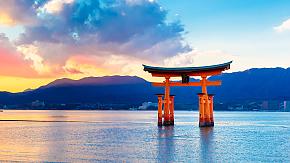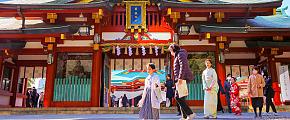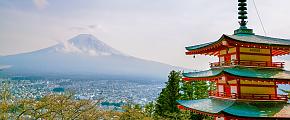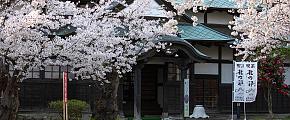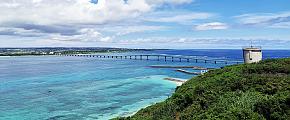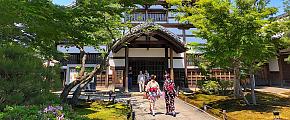Japanese Flower Arrangement (Ikebana) Travel Guide
Ikebana, an ethereal art form, transforms vivacious blossoms and fragile foliage into elaborate ensembles, guiding you toward self-discovery and authentic self-expression. Whether you're a passionate devotee of nature, a minimalist, a chromatic expert, or a soul bursting with creative energy, Ikebana offers a distinct charm that appeals to every sensibility.
For an unparalleled Ikebana expedition in your Japan tour, we've curated a list of premier destinations for viewing Ikebana masterpieces and engaging in hands-on experiences, accompanied by some fundamental Ikebana insights that you may find intriguing.
What Is Ikebana
Ikebana, the time-honored Japanese art of flower arrangement, remains an indispensable facet of Japanese culture. Far beyond positioning flowers in a vase, this disciplined artistry harmoniously unites nature and humankind. An Ikebana composition typically embodies three principal parts: heaven, human, and earth. This tripartite structure mirrors the symbiotic relationship among all life forms.
The assemblage extends beyond blossoms, encompassing stems, leaves, and even rocks, water, and the vessel itself. As you carefully select each plant material, trim the stems, and thoughtfully place each element in the arrangement, you are fully present in the moment. This mindfulness, akin to a meditative state, can usher in a wave of calm and lucidity.
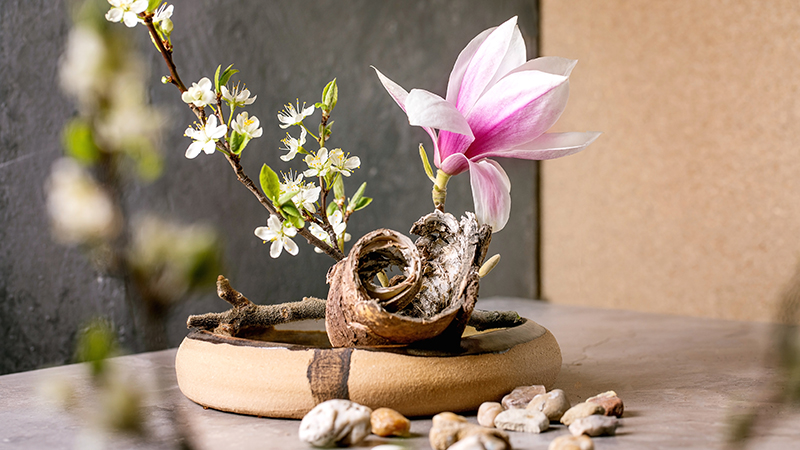 Japanese Flower Arrangement
Japanese Flower Arrangement
Where to See Masterpieces
Ikebana Museum: the Center Stage of Ikebana Artistry
The Ikebana Museum in the Rokkakudo Temple, Kyoto houses a stunning collection of Ikebana masterpieces, showcasing the rich history and evolution of this revered art form. The museum hosts annual exhibitions featuring works mainly by the renowned Ikenobo School of Ikebana, the oldest school of Ikebana. The Ikenobo Spring Ikebana Exhibition is a stunning showcase of the time-honored Rikka style, the minimalist Shoka style, alongside contemporary interpretations. The Kyu-Tanabatakai Ikenobo National Ikebana Exhibition held every November is a grand event that brings together Ikebana practitioners from all over Japan.
Daikakuji Temple: Ikebana Interweaving With Ancient Architecture
Daikakuji Temple in Kyoto is not just a religious site but also a cultural hub where Ikebana takes center stage. The Emperor Saga Dedication Flower Arrangement Festival in spring displays works of the vivacious Moribana style, the elegant Heika style, etc. The arrangements are displayed throughout the temple, creating a stunning juxtaposition of delicate floral art and ancient architecture. You can also explore the temple's scenic gardens and participate in tea ceremonies.
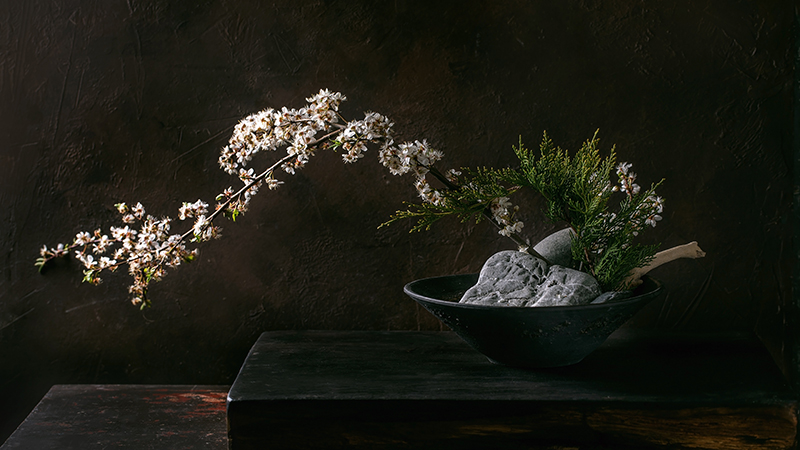 Appreciate the Ikebana Art Work
Appreciate the Ikebana Art Work
Daimaru Department Stores: Ikebana With Commercial Indulgence
The Daimaru Tokyo Department Store boasts around ten art exhibitions annually, featuring a diverse collection of Ikebana masterpieces and thought-provoking sculptures. Beyond the artistic allure, you can explore a wide range of food, beverages, and souvenirs on different floors. The Daimaru Kyoto Department Store is also unmissable, particularly in spring when it becomes the stage for Kado Kyoten, Kyoto's grandest Ikebana festival. This cultural extravaganza showcases Ikebana creations from around 30 schools. In addition, the numerous eateries and boutiques will always delight you.
Top Places for Ikebana Experience
Kyoto
Kyoto offers an array of traditional experiences, among which Ikebana stands out as a tranquil and soul-enriching pursuit, best experienced in a few notable places.
Rokkakudo Temple: Comprehensive Ikebana Practices in Tranquility
Rokkakudo Temple houses workshops of Ikenobo, the oldest Ikebana school, suitable for all levels. You'll learn about how to trim and position each element in a way that creates balance and harmony, how to use the special Ikebana shears and vases, and how to preserve the freshness of your arrangement. Aside from Ikebana, the temple is also a popular spot for meditation and quiet reflection, with its elegant architecture and tranquil gardens.
Sakura Kyoto: Seasonal Ikebana Experiences and Rich Traditions
At the Sakura near Nijo Castle, you'll be guided to observe the lines, shapes, and textures of each plant material, and learn to arrange them in a way that emphasizes their natural beauty. The center provides seasonal flowers and plants, allowing you to create an arrangement that reflects the current season. Beyond Ikebana, you can try your hand at tea ceremony and kimono-wearing.
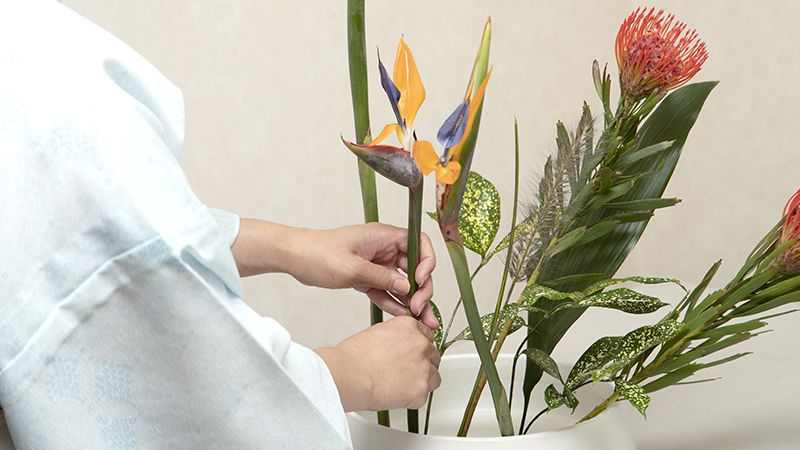 Join an Ikebana Class
Join an Ikebana Class
Tokyo
Tokyo, bustling with towering skyscrapers, is also a place where ancient traditions and art forms continue to thrive. For those seeking to immerse themselves in Ikebana, the Ohara School and Sogetsu School stand out.
Ohara School: In-depth Learning of the Cheerful Moribana Style
The Ohara School specializes in the Moribana style, where arrangements are created in shallow containers. Here, you can partake in hands-on lessons and workshops guided by master instructors, learning the fundamental principles of Ikebana, such as the balance of colors, the rhythm of lines, and the harmony of space.
Sogetsu School: Inclusive and Innovative Approaches
The Sogetsu School, a modern twist to the Ikebana experience, believes that Ikebana can be practiced by anyone, anywhere, and with any material. Their innovative approach to Ikebana is showcased in their workshops, where you are encouraged to think outside the box and experiment with different materials, from traditional flowers to unconventional items like metal wires and plastic. There are also cafes and restaurants, perfect for a quick bite after an Ikebana exploration.
Osaka
Osaka takes you to bustling cultural hubs and tranquil tea houses where you can delve into the history, philosophy, and techniques of Ikebana.
Maikoya Osaka: Beginner-Friendly Workshops
Maikoya Osaka, a cultural center, boasts interactive workshops where you can learn the basics of Ikebana. The Ikebana experience here is less formal, making it a perfect choice for those who are new to the art. You can also learn Japanese cooking and tea ceremony here.
Tea Houses: Ikebana Classes in Historic Tea Space
Ikebana in Osaka can also be experienced in its traditional tea houses. You can join Ikebana classes in historic settings and stroll past stunning Ikebana displays that change with the seasons.
Western vs Japanese Flower Arrangements
At the heart of both Western and Japanese flower arrangements lies a shared reverence for nature and its bounty. Both traditions utilize floral design as a means to capture the beauty of the natural world, transforming simple blooms into exquisite masterpieces. While, as we delve deeper into their artistic expressions, their differences unfold.
Western Abundance vs Japanese Balance
Western flower arrangement is often characterized by its abundance and symmetrical design. The focus lies in the lavish use of flowers, foliage, and colors to create voluminous, multi-dimensional arrangements. In contrast, Ikebana emphasizes shape, line, and form. It gives equal importance to blooms, stems, leaves, and all the elements to create a harmonious balance.
Western Individual Symbolism vs Japanese Holistic Interpretation
Another key difference lies in the symbolic value assigned to flowers. In the West, specific flowers often carry particular meanings, such as red roses symbolizing love or lilies representing purity. In Ikebana, it's not the type of flower but the overall arrangement that carries a deeper meaning, reflecting the artist's spiritual state and the transience of life.
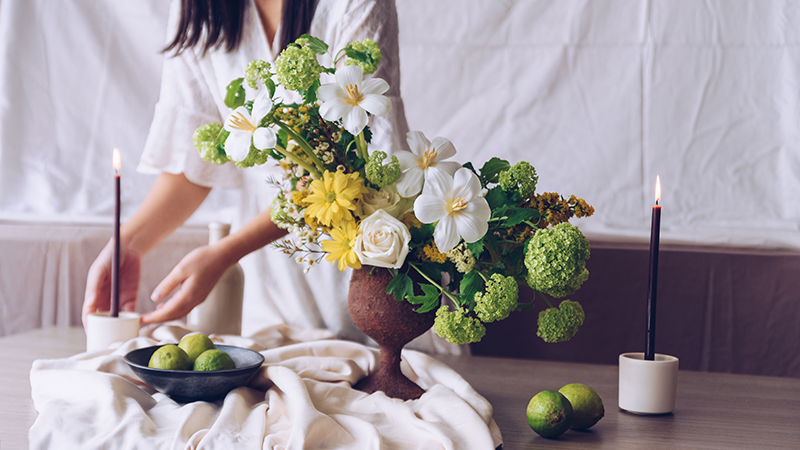 Western Flower Arrangement
Western Flower Arrangement
Different Roles of Their Containers
Furthermore, the containers used in both traditions vary significantly. Western arrangements often use opaque vases, allowing the focus to remain solely on the flowers. In contrast, Ikebana often uses transparent or shallow containers, drawing attention to all the elements including the water and the intricacy of the design beneath the water's surface.
6 Japanese Style Flower Arrangement
Rikka: Traditional and Intricate Arrangement
Rikka, or standing flowers, is an old style of Ikebana. Dating back to the 15th century, it's perfect for those with a deep appreciation for tradition. Rikka is characterized by its complex structure, featuring a vertical arrangement that mirrors nature's growth. It is a microcosm of the universe, symbolizing mountains, waterfalls, and valleys. Each element is carefully placed, balancing the principles of asymmetry, space, and depth.
 Rikka
Rikka
Shoka (Seika): Minimalist Arrangement
For those who appreciate simplicity and subtlety, Shoka, or Seika, is your Zen corner. It captivates the viewer with its understated elegance. Using only a few elements, usually three, Shoka teaches you to find beauty in the basics. It's like creating a small, tranquil space where you can escape the hustle and bustle of everyday life.
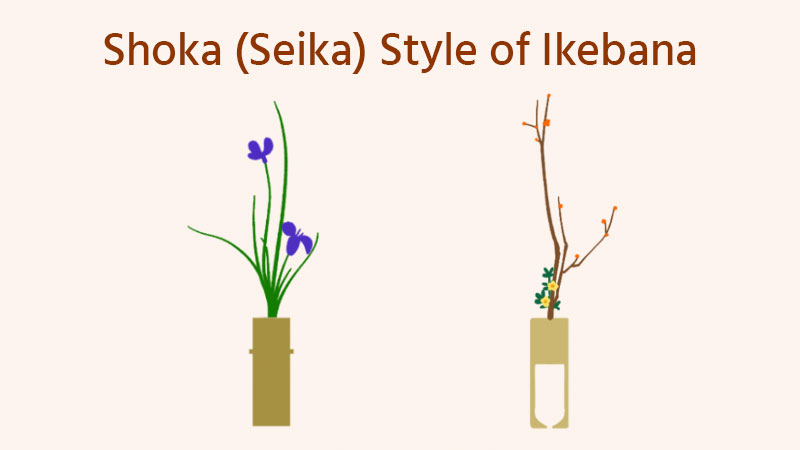 Shoka (Seika)
Shoka (Seika)
Moribana: Vibrant and Open Arrangement
Moribana, meaning piled-up flowers, is ideal for those who enjoy the vibrant play of colors and textures. Moribana is a low, flat arrangement often displayed in a shallow, wide dish which enhances the feeling of openness. It emphasizes the natural shape and line of the plant materials, creating a dynamic composition that captures the eye. The use of water adds an extra dimension.
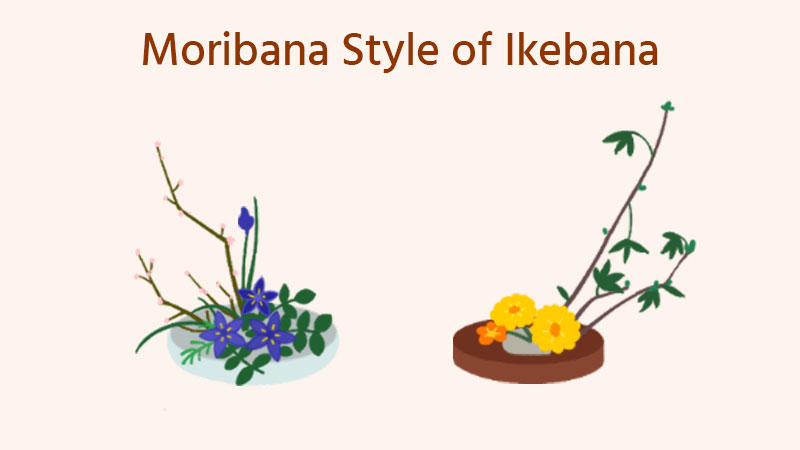 Moribana
Moribana
Heika: Sophisticated and Formal Arrangement
If you're someone who enjoys making a grand statement, then Heika is your stage. Heika is a vertical arrangement traditionally displayed in a tall, narrow vase. It creates a sense of height and depth, with each stem carefully arranged to create a flowing, rhythmic composition. It's a style that exudes elegance and sophistication, often seen in formal settings.
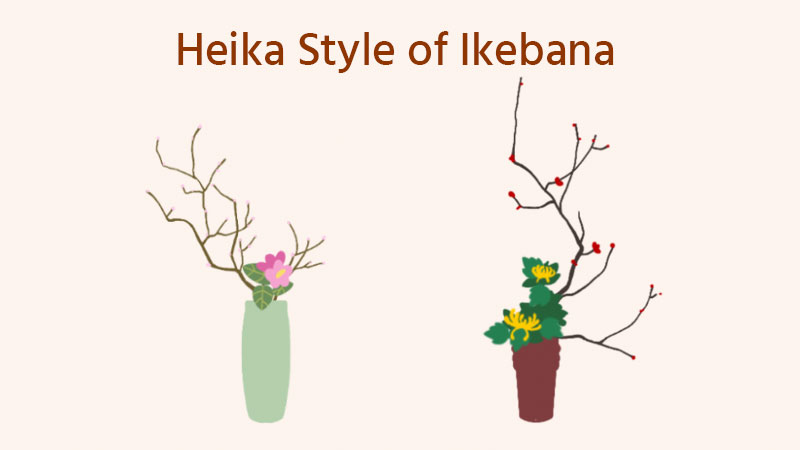 Heika
Heika
Nageire: Natural Arrangement
Nageire celebrates the natural flow of plants, making it a perfect pick for those entranced by untouched beauty. In contrast to Ikebana styles that adhere to specific structures, Nageire embraces imperfection and seemingly spontaneous floral arrangements. Yet, beneath this apparent randomness, a balance and harmony should be maintained.
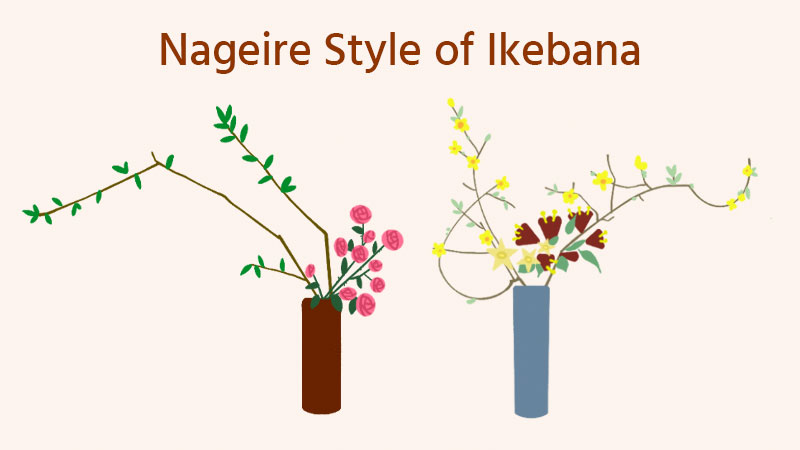 Nageire
Nageire
Free Style: Limitless Arrangement
Free Style is for those who enjoy exploring new possibilities and ideas. There are no rules, no limitations, just endless possibilities. It's a blank canvas that invites you to unleash your creativity, using not only plants but any material that sparks your artistic curiosity. It's a style that encourages experimentation, a testament to the evolving spirit of Ikebana.
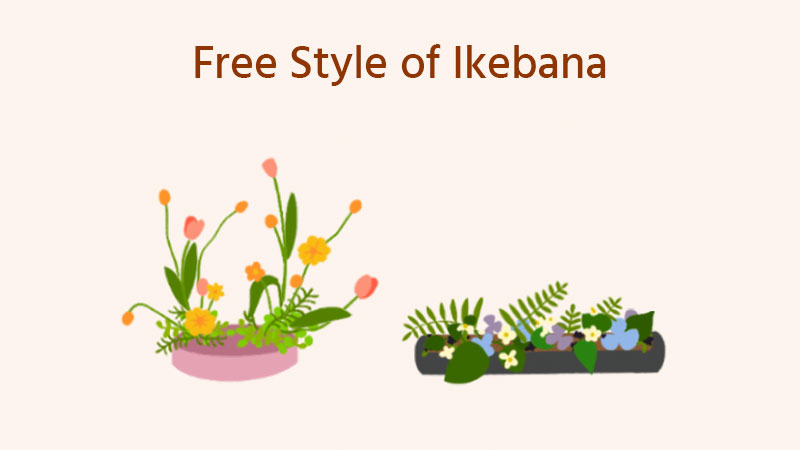 Free Style
Free Style
Dive Into Ikebana in Japan With Odynovo
Decipher the profound symbolism intertwined with Ikebana, and experience its pulsating essence firsthand. Let Odynovo create travel plans and handle possible hassles for you, so you can enjoy your trip to the fullest.
Related Posts You May Like
What Our Clients Say
Explore the latest verified reviews of Odynovo's travel services on Tripadvisor, Google, Trustpilot, Product Review and more trusted platforms.

